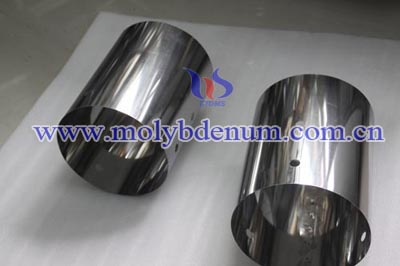
TZM Alloy(Titanium Zirconium Molybdenum) Enhanced Method & Enhanced Mechanism As Follows:
TZM alloy of Ti and Zr in a small amount of crystal grains in the form of molybdenum Mo-Ti, Mo-Zr solid solution and dispersion of the carbide particles, the mechanical properties of the alloy significantly improved, and its enhanced mechanism is the Mo-Ti, Mo-Zr solid solution carbide particles of solid solution strengthening and dispersion strengthening.
Mainly through solid solution strengthening molybdenum substrate was dissolved in a small amount of Zr, Ti, C and other elements, the crystal lattice of molybdenum contorted, solvent and solute atoms of elements the atomic size of the larger the difference factor to enhance the better, zirconium, and the size difference factor of molybdenum +14.3 size of titanium and molybdenum difference factor of +4.4, the size difference between carbon and molybdenum factor of -34.5, thereby zirconia solid solution strengthening effect of Mo better than titanium.
Carbon and molybdenum size factor difference although relatively high, because the solubility of carbon in small molybdenum, TZM alloy(Titanium Zirconium Molybdenum) with a carbon content of small (less than 0.04%), most of which also carbon and molybdenum, zirconium , composed of titanium carbide, and carbon-reduction reaction also consumed as part of the solid solution strengthening so TZM alloy mainly refers Mo-Ti, Mo-Zr solid solution strengthening.

In TZM alloy(Titanium Zirconium Molybdenum), Zr, Ti and C to generate particles of TiC and ZrC, while there are some ZrO alloy particle, the distribution of the particles dispersed in the alloy, in the event of deformation, can hinder dislocation movement, therefore, the played a dispersion strengthened alloy effect.
In the solid solution strengthening and dispersion strengthening study, found that instead of Ti with Hf strengthening effect therefore has better Mo-Ti-Hf alloy to become a research focus direction. Mo-Ti, Mo-Zr solid solution strengthening and dispersion particle dispersion strengthened not only to improve the mechanical properties of the alloy, but also improve the recrystallization temperature.
Recrystallization temperature increased to ensure that the TZM alloy is still a high strength at high temperatures. Studies have shown that, TZM alloy plate at 1 500 ℃ when the microstructure was observed and found that grains are interlocking serrated, organizational structure is dense and uniform, with tiny grains dispersed particles play a dispersion strengthening effect. Grains of pure molybdenum occurs at 1 200 ℃ recrystallization from processing state fibrous tissue becomes equiaxed organizations, 1 400 ℃ when the grain to grow significantly, and showed a polygonal shape, grain boundaries than straight. Thus, TZM alloy than the recrystallization temperature of pure molybdenum improves about 400 ℃.
If you have any interest in our TZM alloy (Titanium Zirconium Molybdenum) or other molybdenum alloy products, please feel free to contact us by email: sales@chinatungsten.com,sales@xiamentungsten.com or by telephone:86 592 512 9696.